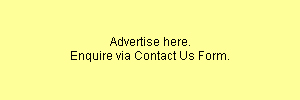Peter, thanks for the filter picutre, you are very resourceful.
Dennis,
Like what Peter said, your emperor filter will remove CO2 seriously. Since you have small tank, a small powered internal filter will do the job. KL has a 2ft cube tank with the faithful Eheim internal filter (the smallest model) and it works fine. Use any low wattage internal filter with flow rate less than 300 litres per hour - after install, if possible, tune it down to about 150 litre per hour. Mount the filter such that its' outlet is at mid height of the tank.
For CO2, use a diffuser (a bubble stone will do the job) and place it under the internal filter where the suction is. This will helps to dissolve and spread the CO2 in the tank as it goes throught the filter media and then blown at the outlet. Tune the CO2 injection rate till you get about 25~30ppm, measureable using KH & PH readings. E.g, if you have 2 degree of KH, then inject the CO2 till you get a stable PH at 6.4 will be good.
For planting, try to cover any bare gravel with foreground plants, it helps in improving the water quality by keeping the mulms from floating around.












 Reply With Quote
Reply With Quote

Bookmarks